The British Textile Biennial has now been going on for almost a week. I spent the day in Blackburn where six of the venues are located that are exhibiting works as part of the BTB. Today, I visited three of these venues to see four of the exhibitions.
Firstly, I visited The Exchange to see Ofong Ufok, a monumental hanging made from used clothing. Artist Victoria Udondian made this with communities in New York:

This image just shows a small part of the installation. I deliberately took the photo from this angle to emphasise how vast this piece is. The shape can be seen in different ways. To me, this looks like an amorphous monster that comes up out from a vast lawn of clothing. Although this work will have been made with just a tiny fraction of all the clothes discarded globally every year, it is impressive in size and confronts the viewer with our wasteful consumer habits.
At the same venue, Return to Sender was shown inside a room made from bales of used garments. The documentary, by the NEST collective, gives a voice to people in the global south to talk about the textile ‘donations’ they receive from richer economies:
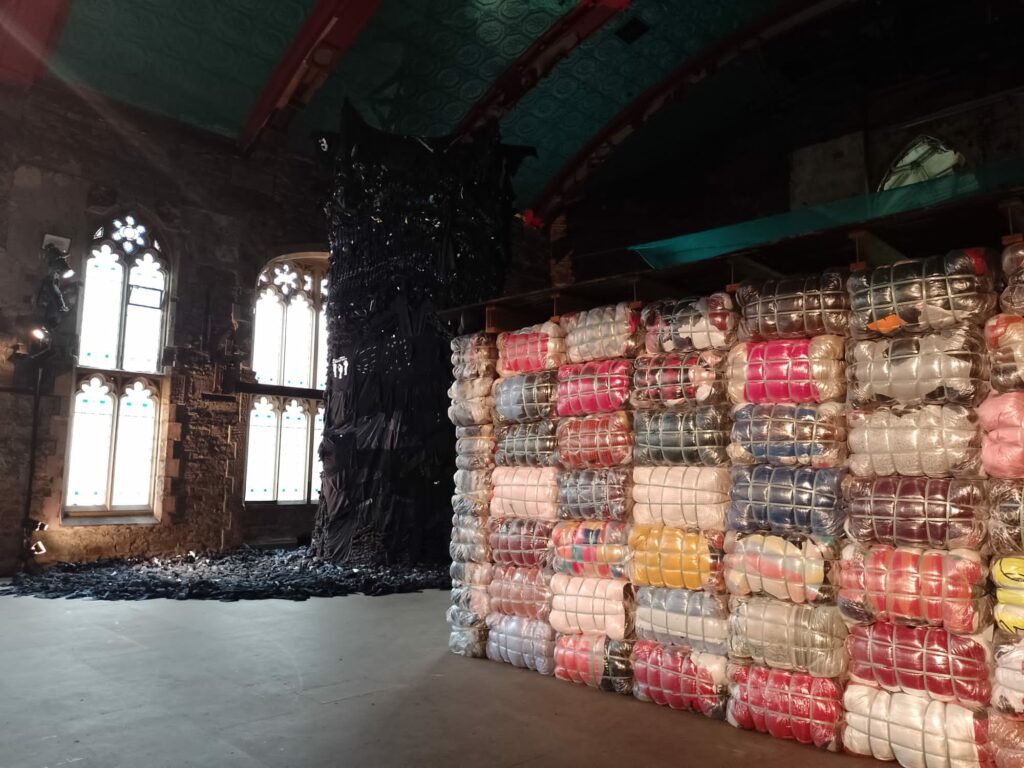
Tony’s Ballroom was used to show the Dead White Man exhibition by Jeremy Hutchison. The exhibition consists of a video with ambient soundtrack showing what, to me, look like textile monsters made from discarded garments. These monsters come to life and appear to try to find their way back to the richer economies where the garments were originally purchased. The textile monsters are on display in the room adjacent to the viewing room.
I didn’t take any photos of Dead White Man, but I did make a sketch of one of the pieces:
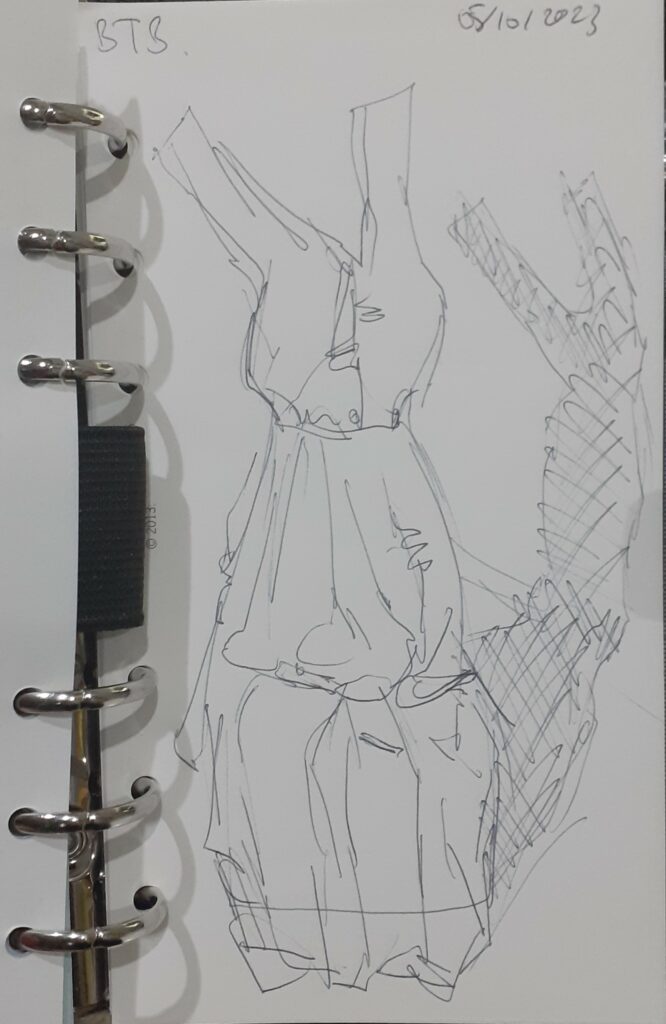
In a shopfront on the high street you can view Dead White Man (effigies) by Jeremy Hutchison. Local community centres and schools took part in this project by transforming used textiles into ‘mini monsters’:
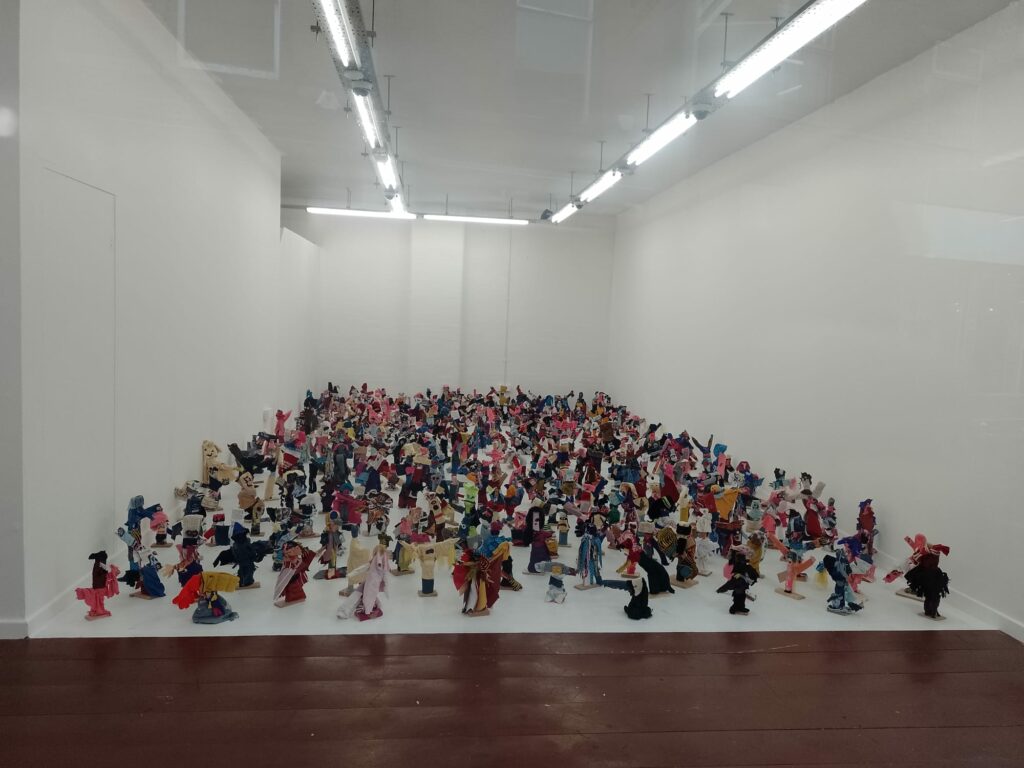

I found this a creative and fun way to get people to think about textile waste. Every effigy is different yet they are all so colourful!
Finally, I went to see Material Memory and Common Threads, both on display in the Crypt at the Blackburn Cathedral:
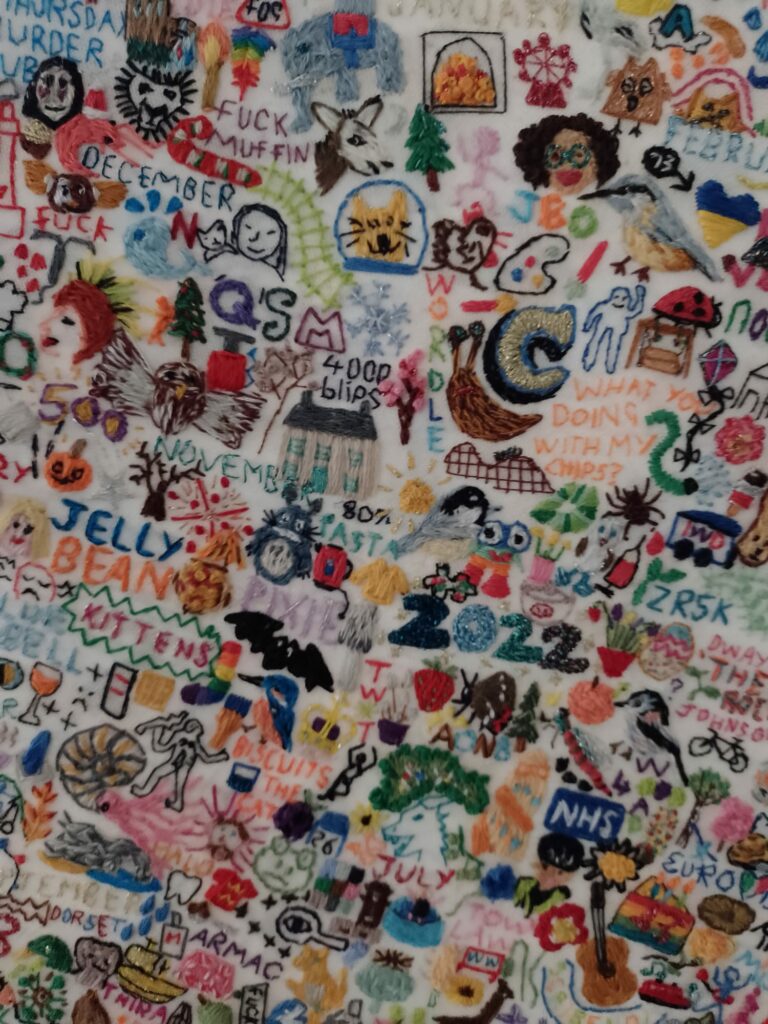
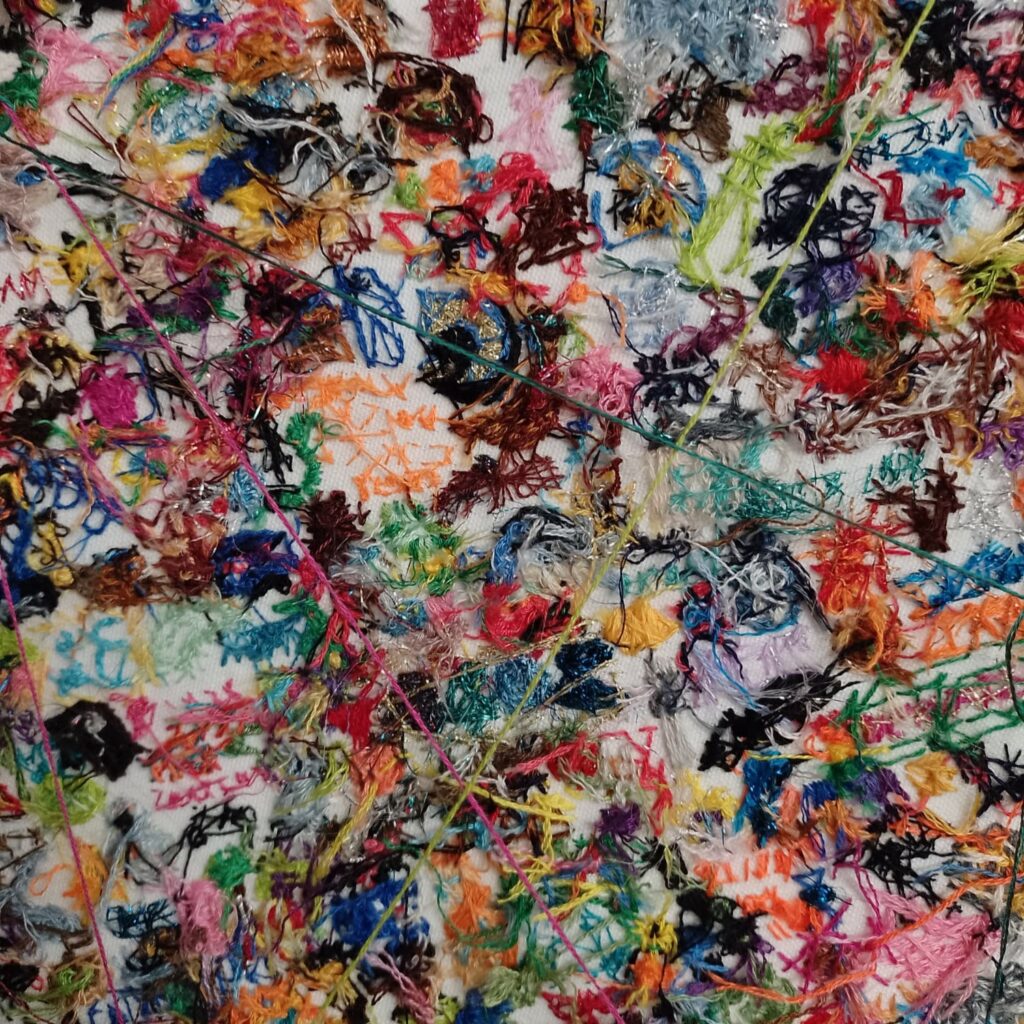
Above we can see the front and back of the same piece, an item that’s part of the Material Memory exhibition. This is a 365-embroidery journal by Caroline Eccles. Each day is represented by an icon. I really love this as it’s a journal but something quite different from writing about the day’s events and thoughts in a notebook. The work is so colourful and there’s so much to see! I’d like to know what happened the day she embroidered “Fuck muffin”!
The Common Threads exhibition featured many works of embroidery depicting rural life. I only took a few snaps of small parts of the works:
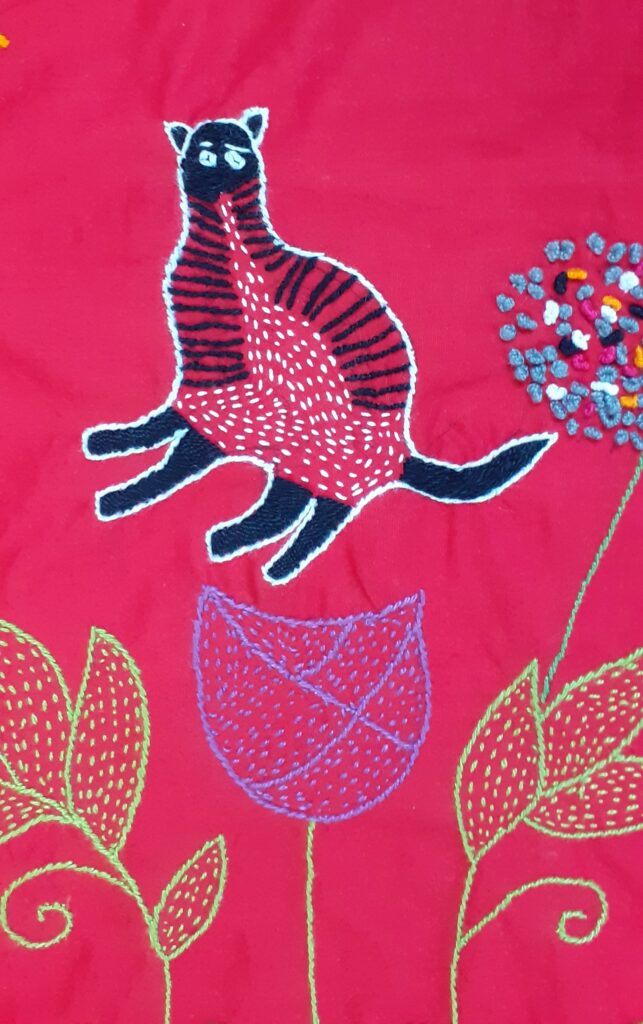

Out of the exhibitions I saw today, Dead White Man is my favourite. Initially, it’s not really clear what you are looking at when viewing the video. However, it’s intriguing to see these faceless textile monsters roam the streets of Africa and then realise they are trying to make their way back ‘home’. It really makes you think about the amount of travel garments make even after they have been discarded by their first owner.
I think we would all like to think that we are doing the right thing by donating our used but still usable garments and textiles to a charity shop or collection point thinking we are helping local charities raise money whilst selling clothes at a low price to local people who struggle to make ends meet. I’d also like to think that whatever used textiles we export to developing countries can be used by people there. After all, “free clothes” sounds good, right? But what if many of the garments are not suitable for the local weather? What if many of the garments are damaged, stained, worn down? What if many of the garments are not worn for cultural or practical reasons?
And what about low-quality items: why would someone working a physical job want a garment that develops holes or tears within days of working in it? If YOU don’t want low-quality clothing, why would someone who puts their clothes to the test more by working a physical job want your hand-me-downs? I guess it’s got something to do with a gifted horse…
But should people be grateful for vast quantities of crap clothing, a lot of which they can’t use, when that crap then ends up in a landfill, on a beach, or burned? And should people in developing countries even be happy with donated garments they can use if these donations undercut local garment makers…? Food for thought for sure.